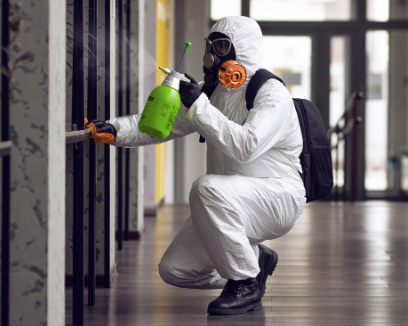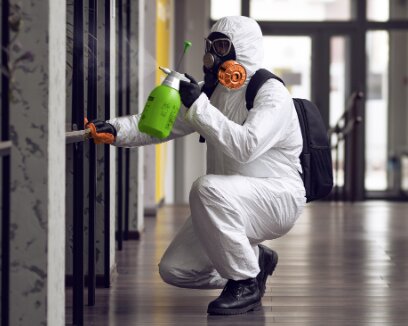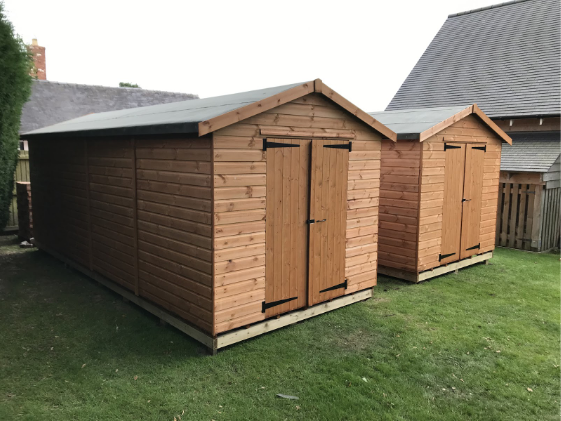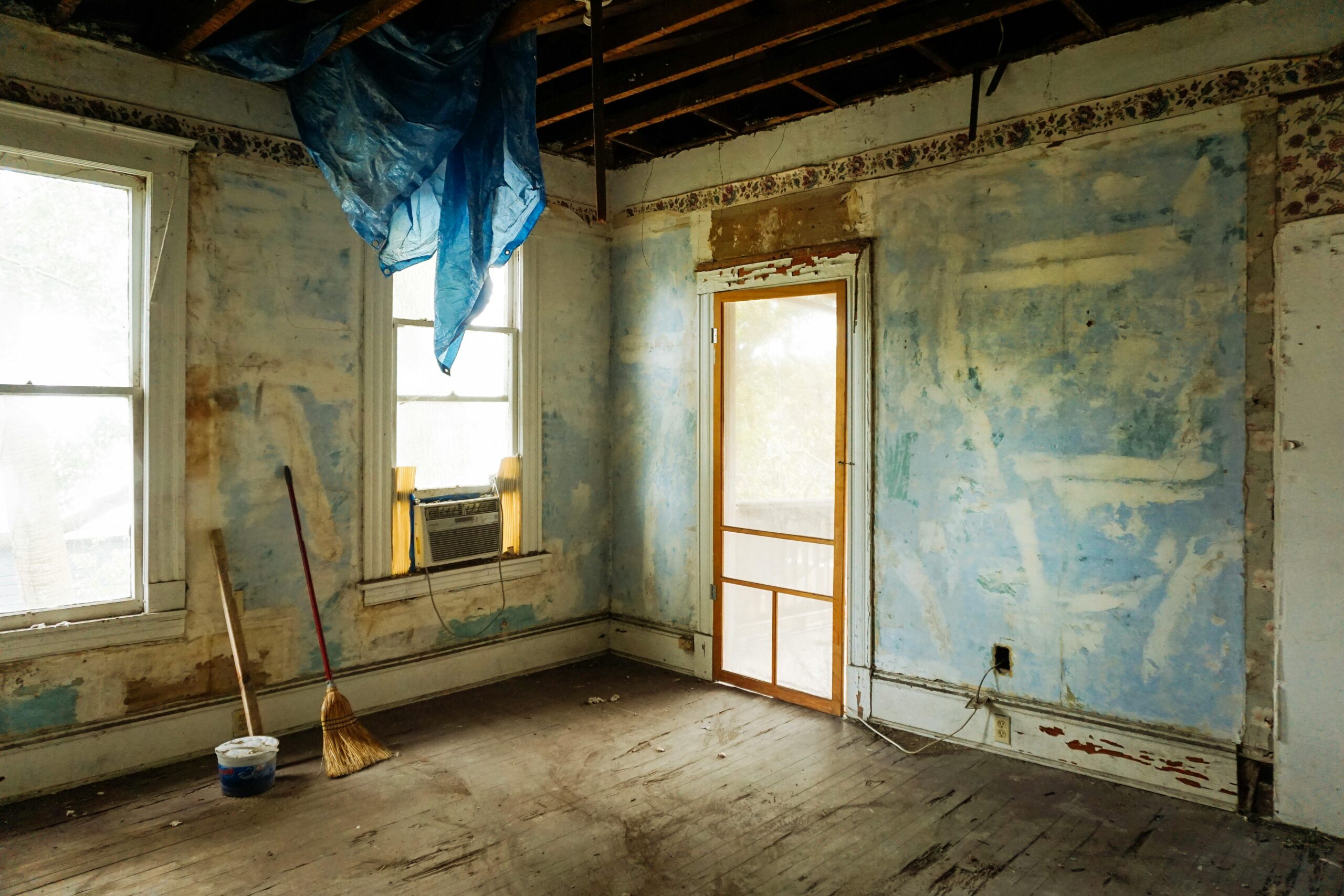Significance Of Routine Mold Testing In Residential And Commercial Areas


Are you aware of the potential health risks that mold can pose in residential and commercial areas? Mold growth is a common problem that can lead to various health issues if left unaddressed. That’s why routine mold testing is crucial in maintaining a healthy environment.
By identifying common areas prone to mold growth, you can take early detection and prevention measures to mitigate its effects. There are different types of mold testing methods available, each with its own advantages and limitations. Hiring a professional mold testing service ensures accurate results and comprehensive analysis.
Once you have the test results, it’s important to interpret them correctly to understand the severity of the situation. Implementing effective mold remediation strategies is vital for eliminating existing mold and preventing future growth. Additionally, creating a long-term mold prevention plan will help maintain a healthy living or working space.
In this article, we will delve into the significance of routine assessment in residential and commercial areas, providing you with valuable insights on how to ensure a mold-free environment for your well-being and peace of mind.
Contents [show]
Key Takeaways
– Routine mold testing is crucial for maintaining a healthy environment in residential and commercial areas.
– Hiring a professional mold testing service ensures accurate results and comprehensive analysis.
– Test results should be interpreted correctly to understand the severity of the mold situation.
– Effective mold remediation strategies and long-term prevention plans are necessary for eliminating existing mold and preventing future growth.
Understanding the Health Risks of Mold
You need to understand the health risks of mold because it can silently wreak havoc on your well-being, causing respiratory issues and potentially compromising your immune system.
Mold spores, when inhaled, can trigger a range of health effects. For individuals with mold allergies, exposure to mold can lead to nasal congestion, coughing, sneezing, and irritated eyes. These symptoms may resemble those of seasonal allergies or the common cold, making it easy to overlook the underlying cause – mold.
Moreover, prolonged exposure to mold can worsen asthma symptoms and even lead to chronic respiratory conditions. Additionally, certain types of molds produce mycotoxins that are harmful if ingested or inhaled excessively.
It is essential to recognize these health risks so that appropriate steps, such as routine mold testing, can be taken to ensure a safe and healthy indoor environment.
Identifying Common Areas Prone to Mold Growth
Identifying common areas where mold tends to grow is crucial for preventing its spread. By understanding the common causes and implementing effective prevention techniques, you can take proactive measures to safeguard your residential or commercial space.
One of the most common areas prone to mold growth is the bathroom. The combination of moisture, lack of ventilation, and organic materials like soap scum or hair creates an ideal environment for mold to thrive.
Additionally, kitchens are also susceptible due to food particles and high humidity levels.
Basements and crawl spaces are notorious for their dampness, making them another hot spot for mold growth.
Other areas to watch out for include attics with poor ventilation and any rooms with water leaks or condensation issues.
Regularly inspecting these areas and promptly addressing any underlying problems will help prevent mold before it becomes a major issue in your living or working environment.
Importance of Early Detection and Prevention
Don’t underestimate the importance of catching and preventing mold growth early on. Early intervention is crucial in mitigating potential health hazards associated with mold exposure. By detecting mold at its initial stages, you can take immediate action to prevent its spread and minimize the risk to yourself and others.
Here are three reasons why early detection and prevention are essential:
– Health risks: Mold releases spores into the air that can cause respiratory problems, allergies, and even infections. Identifying mold early allows you to address these health hazards promptly.
– Structural damage: Mold growth can weaken the structural integrity of buildings over time. Early intervention helps prevent costly repairs by addressing any underlying moisture issues before they escalate.
– Cost-effective solution: Dealing with small-scale mold problems is more affordable than extensive remediation efforts required for widespread infestations.
Prioritizing routine mold testing ensures a safe environment while minimizing potential health risks and financial burdens associated with unchecked mold growth.
Types of Mold Testing Methods
One effective way to ensure a safe environment and prevent potential health risks associated with mold growth is by utilizing various types of mold testing methods.
Two commonly used methods for mold testing are air sampling and surface testing. Air sampling involves collecting samples of the air in a specific area to determine the concentration of mold spores present. This method can help identify hidden sources of mold and assess the overall air quality.
Surface testing, on the other hand, involves taking swab or tape samples from surfaces suspected to be contaminated with mold. These samples are then sent to a laboratory for analysis, which can determine the type and quantity of mold present.
Both air sampling and surface testing provide valuable information that can guide remediation efforts and ensure a healthy living or working environment.
Hiring a Professional Mold Testing Service
Hiring a professional mold testing service can be a wise investment for ensuring the health and safety of your indoor environment. Mold inspection is a crucial step in preventing potential health hazards caused by mold growth. By hiring a professional, you can benefit from their expertise and specialized equipment to accurately detect and identify any hidden mold in your residential or commercial space.
Here are three key reasons why you should consider hiring a professional mold testing service:
– Expertise: Professionals have extensive knowledge and experience in mold detection, allowing them to identify even the smallest traces of mold that may go unnoticed by an untrained eye.
– Accuracy: Professional mold testing services utilize advanced techniques and tools to provide reliable and accurate results, ensuring that no areas of concern are overlooked.
– Prevention: Early detection of mold can help prevent further damage to your property and protect the health of occupants, making regular mold inspections essential.
Investing in a professional mold testing service will give you peace of mind knowing that your indoor environment is free from harmful molds.
Interpreting Mold Test Results
Once you receive your mold test results, you’ll be able to understand the extent of the issue and take necessary steps to address it.
Interpreting mold test reports is crucial for accurately assessing the mold problem in your residential or commercial area. It is important to note that mold test accuracy can vary depending on the testing method used and the expertise of the tester.
The report will typically provide information about the types of mold present, their concentration levels, and whether they pose a health risk. Understanding these details will help you determine if remediation is necessary and what measures should be taken to eliminate or control the mold growth.
Additionally, it can provide valuable insights into potential sources of moisture or water damage that may need attention. If you are unsure about interpreting the results, consulting with a professional who specializes in mold remediation is recommended to ensure an effective response to the issue at hand.
Implementing Effective Mold Remediation Strategies
To effectively address your mold problem, it’s important to implement strategies that will help eliminate or control the growth of mold in your space. The mold removal process involves several steps to ensure a thorough and effective remediation.
First, identify and fix the source of moisture that’s causing the mold growth. This may involve repairing leaks, improving ventilation, or addressing humidity issues.
Next, contain the affected area to prevent cross-contamination by sealing off doors, windows, and vents with plastic sheeting and duct tape.
Then, remove any contaminated materials such as drywall or carpeting that can’t be salvaged. Use proper personal protective equipment like gloves and masks during this process.
Finally, clean and disinfect all surfaces using appropriate cleaning solutions and techniques recommended for mold remediation.
Following these best mold remediation techniques will help ensure a successful removal process and prevent future mold growth in your space.
Creating a Long-Term Mold Prevention Plan
Developing an effective long-term plan for preventing mold growth is essential in maintaining a healthy and safe environment. Mold prevention techniques are crucial to avoid potential health risks and costly damages caused by mold infestation.
To achieve long-term mold control, it is important to identify and address the underlying causes of moisture accumulation, such as leaks or poor ventilation. Regular inspections should be conducted to detect any signs of water damage or mold growth early on.
Implementing proper humidity control measures, like using dehumidifiers or air conditioners, can help prevent excess moisture in the air that promotes mold growth. Additionally, ensuring adequate ventilation in high-moisture areas like bathrooms and kitchens can minimize condensation buildup.
Properly sealing cracks and gaps in walls, windows, and doors also helps prevent moisture intrusion. By incorporating these proactive strategies into your mold prevention plan, you can maintain a mold-free environment for the long term.
Also Read: Protecting Your Home: How to Prevent House Doors from Termites
Conclusion
In conclusion, routine mold testing is of utmost importance in both residential and commercial areas. By understanding the health risks associated with mold and identifying common areas prone to growth, you can effectively protect yourself and others from the harmful effects of mold exposure.
Hiring a professional mold testing service ensures accurate results and enables you to interpret them correctly. Furthermore, by implementing effective remediation strategies and creating a long-term prevention plan, you can maintain a safe and healthy environment for everyone.





